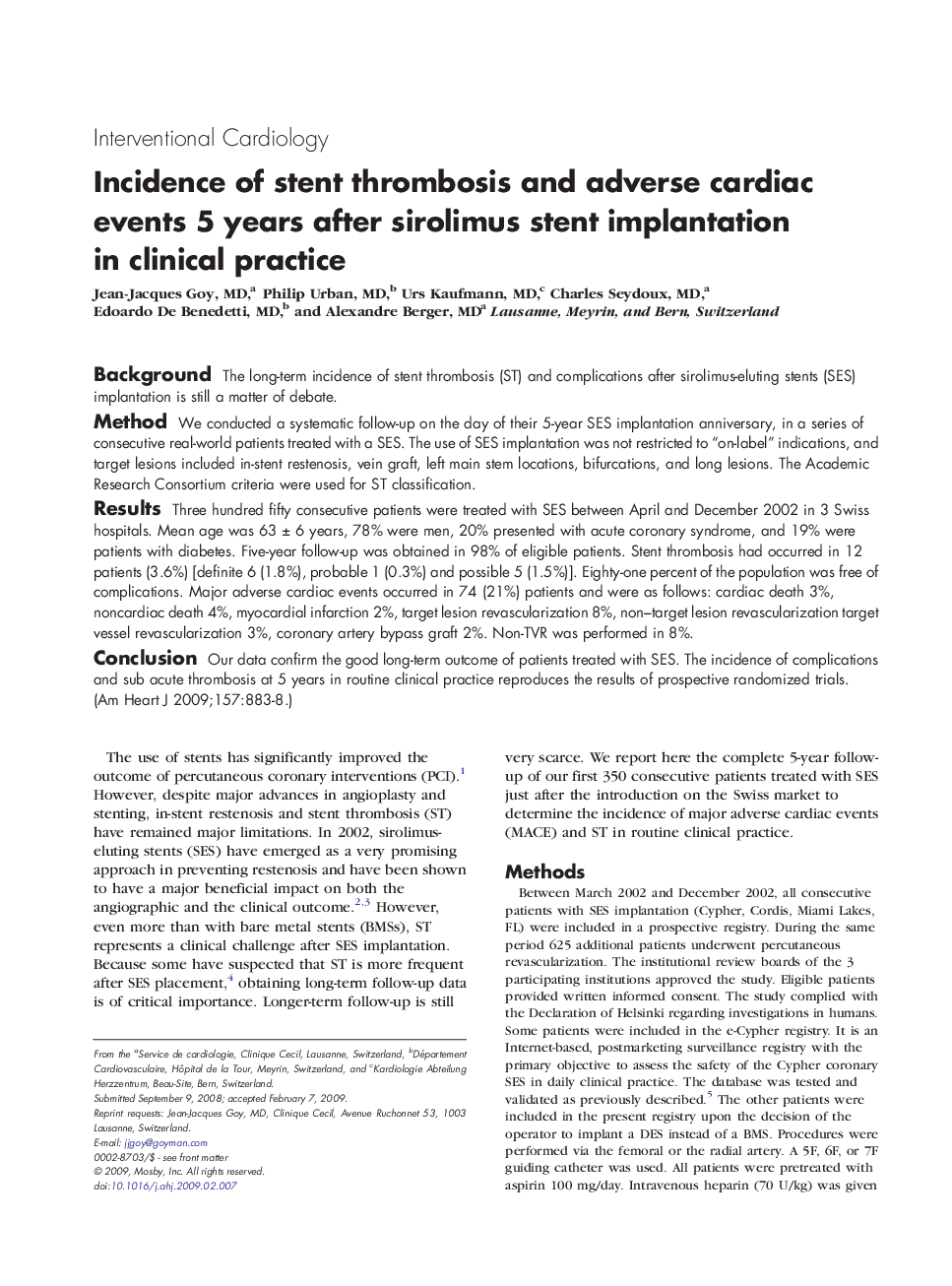| Article ID | Journal | Published Year | Pages | File Type |
|---|---|---|---|---|
| 2849750 | American Heart Journal | 2009 | 6 Pages |
BackgroundThe long-term incidence of stent thrombosis (ST) and complications after sirolimus-eluting stents (SES) implantation is still a matter of debate.MethodWe conducted a systematic follow-up on the day of their 5-year SES implantation anniversary, in a series of consecutive real-world patients treated with a SES. The use of SES implantation was not restricted to “on-label” indications, and target lesions included in-stent restenosis, vein graft, left main stem locations, bifurcations, and long lesions. The Academic Research Consortium criteria were used for ST classification.ResultsThree hundred fifty consecutive patients were treated with SES between April and December 2002 in 3 Swiss hospitals. Mean age was 63 ± 6 years, 78% were men, 20% presented with acute coronary syndrome, and 19% were patients with diabetes. Five-year follow-up was obtained in 98% of eligible patients. Stent thrombosis had occurred in 12 patients (3.6%) [definite 6 (1.8%), probable 1 (0.3%) and possible 5 (1.5%)]. Eighty-one percent of the population was free of complications. Major adverse cardiac events occurred in 74 (21%) patients and were as follows: cardiac death 3%, noncardiac death 4%, myocardial infarction 2%, target lesion revascularization 8%, non–target lesion revascularization target vessel revascularization 3%, coronary artery bypass graft 2%. Non-TVR was performed in 8%.ConclusionOur data confirm the good long-term outcome of patients treated with SES. The incidence of complications and sub acute thrombosis at 5 years in routine clinical practice reproduces the results of prospective randomized trials.
